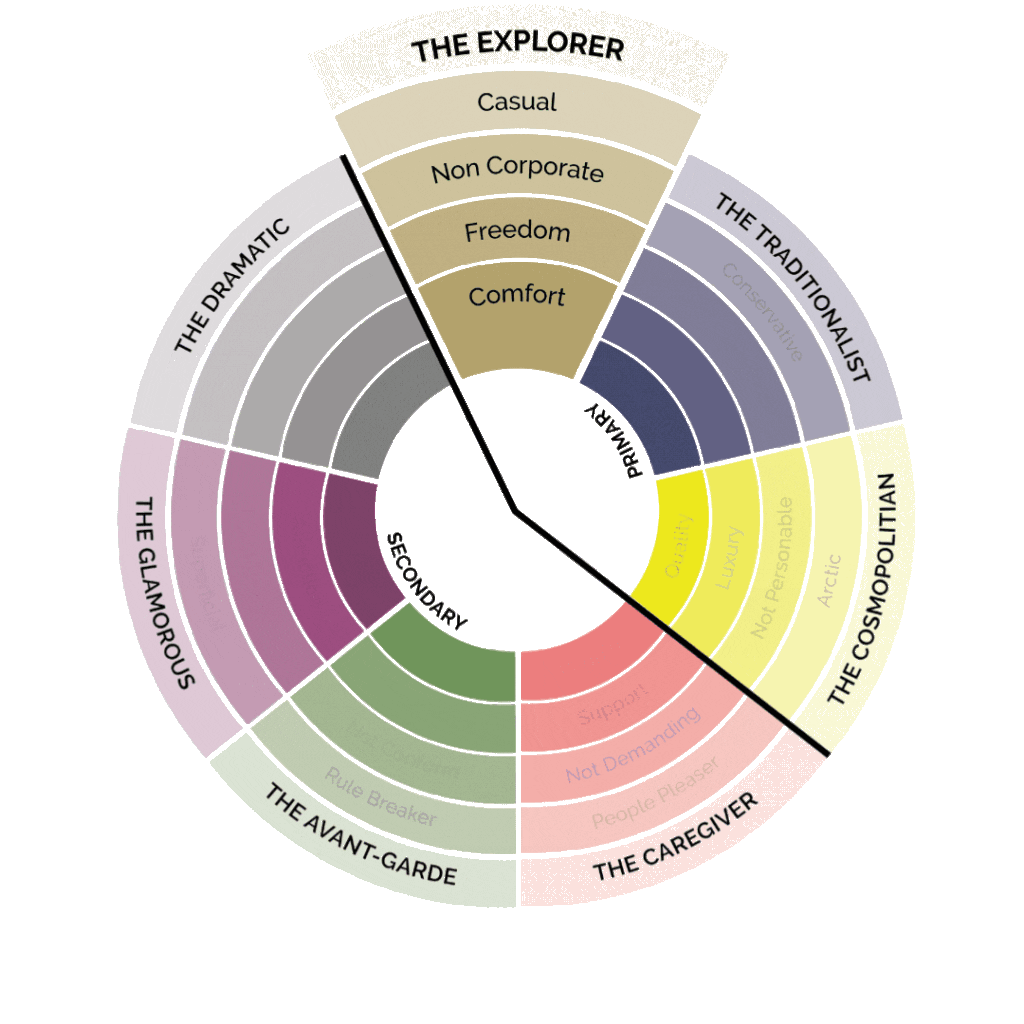When to Fire a Client (and How to Do It Without Burning Your Reputation)
Every business owner, professional, or freelancer will eventually face a moment they dread but secretly suspect is coming: the realization that it’s time to fire a client. Not because you’re flaky. Not because you don’t care. But because something essential—respect, alignment, boundaries, energy—is no longer in place.
Letting go of a client can feel like failure. After all, aren’t we supposed to “serve,” “adapt,” “deliver”? But here’s the uncomfortable truth: not all clients are a fit. Some erode your energy, misalign with your values, or cost more than they’re worth—not just financially, but emotionally and mentally. The real risk isn’t in walking away. It’s in staying too long and letting your best work suffer.
The question is: how do you know when it’s time? And how do you fire a client without setting your own business on fire?
Key Takeaways
- Firing a client is sometimes the most professional decision you can make.
- Signs like disrespect, scope creep, or misalignment are valid reasons to walk away.
- Keeping a toxic client can damage morale, brand, and long-term success.
- Mishandling the breakup can lead to reputational harm or even legal fallout.
- Different reasons for firing require different tones, approaches, and phrases.
- Clarity, professionalism, and emotional intelligence make all the difference.
- You don’t need to justify the decision—you need to deliver it with calm authority.
When Keeping the Client Costs Too Much
There’s a belief many of us were raised with: the client is always right. But let’s be clear—that’s customer service doctrine, not a sustainable business strategy.
Sometimes, choosing to fire a client is the most strategic move you can make. Difficult clients aren’t just a drain on your calendar—they’re a threat to your energy, your team, and your growth. They demand more than agreed, ignore your boundaries, second-guess your expertise, or just make working with them feel like walking through molasses.
And it’s not just about stress. Toxic clients cost you opportunity. While you’re putting out fires for someone who doesn’t respect your process, you’re saying no—either explicitly or implicitly—to better-aligned clients who could actually help your business thrive.
Keeping the wrong client too long doesn’t just frustrate you. It reshapes your business around dysfunction. You become reactive, defensive, exhausted. Eventually, you risk resenting the very work you once loved.
Ask yourself: what’s the real cost of keeping this relationship going—and who’s paying it?
You can be the best in your field and still lose to someone who tells a better story.
Red Flags: How You Know It’s Time to Fire a Client
Knowing when to fire a client doesn’t come with a playbook—but there are patterns. And the truth is, those patterns often start subtly. It could be an offhand comment that rubs you the wrong way. A vague sense of dread before every meeting. A feeling that you’re no longer doing your best work—not because of lack of skill, but because of who you’re doing it for. You might notice you’re overexplaining, overaccommodating, or constantly adjusting your standards to avoid conflict. These micro-signals often come before the bigger ones. Learning to recognize them isn’t just about protecting your business—it’s about preserving your peace, your energy, and your creative integrity. Here are some signs it might be time to walk away:
They consistently disrespect your time. Late payments, missed meetings, last-minute asks—these are signals, not accidents.
They challenge your expertise at every turn. Collaboration is one thing. Constant undermining is another.
They ignore boundaries. If you’ve outlined expectations and they’re steamrolled anyway, that’s a major red flag.
They drain your energy. If every interaction leaves you feeling deflated, you’re not just dealing with a “difficult” client—you’re dealing with the wrong client.
They don’t align with your values. Sometimes it’s subtle. A tone, a behavior, a way they treat your team. But it matters.
And perhaps the biggest one: You dread every interaction. That gut feeling? That’s data.
You didn’t go into business to work with everyone. You went into business to work with the right ones. Sometimes, learning to fire a client is the only way to make room for that.
If you’re not shaping your narrative, someone with less context is.
The Risks of Keeping a Client You Should Have Let Go
There’s always a short-term payoff to keeping the client: the invoice, the retainer, the predictable revenue. But long-term? The risks are real.
Emotional exhaustion: Clients who erode your confidence, micromanage your process, or never feel satisfied can slowly dismantle your motivation.
Team morale drops: If you have a team, they feel it too. Working with a disrespectful or chaotic client breeds resentment and tension internally.
Opportunity cost: Every minute spent managing a misaligned client is a minute not spent courting, onboarding, or serving better-aligned ones.
Brand damage: When clients force you to produce work that isn’t your best—because of unrealistic timelines or poor direction—you risk reputation erosion.
Scope creep without compensation: The longer you “make exceptions,” the more those exceptions become expectations.
The takeaway? Avoiding discomfort today by keeping the wrong client can create far bigger discomfort later. And often, that discomfort doesn’t just show up in your calendar—it shows up in your mindset, your margins, and your mission. The wrong client can slowly shift how you show up in your business, causing you to play small, second-guess your instincts, or deprioritize the work that lights you up. It’s not just about managing stress; it’s about protecting your ability to grow and lead. Learning how and when to fire a client is a business skill, not a moral failure—and it’s also a form of self-respect.
You don’t need to go viral—you need to be visible where it counts.
The Risks of Firing a Client the Wrong Way
Firing a client isn’t just about the what—it’s about the how. Do it poorly, and you risk more than hurt feelings. It’s about the ripple effects you don’t always see right away. A clumsy or reactive breakup can shake your confidence, complicate your reputation, and create unnecessary tension with others in your network. Even if the client deserved to be let go, how you do it determines what story follows you. Do you leave the relationship scorched, or simply closed? When done thoughtfully, firing a client can be a moment of clarity and closure—not chaos. But without intentionality, it can trigger defensiveness, gossip, or regret on both sides.
Legal repercussions: If there’s a contract involved, you’ll want to make sure you’re following terms carefully.
Reputation fallout: We live in a world of reviews, screenshots, and social media. A messy exit can go public fast.
Burned bridges: Sometimes a client isn’t a fit right now, but could be later—or could refer others. Ending things professionally preserves future possibilities.
Internal drama: If you have a team, how you handle the breakup sets the tone. Keep it clean, clear, and blame-free.
When you fire a client, don’t go silent. Don’t go emotional. Go steady, firm, and respectful. The goal isn’t to win—it’s to close the loop with grace. Because the truth is, how you exit a working relationship can say just as much about your professionalism as how you begin one. Even if the experience was frustrating or disappointing, you’re writing the final chapter—and that chapter can either protect your reputation or complicate it. Letting go with maturity, even in the face of conflict, leaves the door open for future respect, and maybe even future opportunities in surprising ways. People remember how you made them feel on the way out. Make that memory clean, even if the relationship was messy.
Good PR doesn’t make you louder—it makes you clearer.
Different Reasons, Different Responses: How to Fire a Client With Clarity
There isn’t one way to fire a client—there are many, depending on why it’s happening. Some exits are about protecting your team. Others are about protecting your brand. And sometimes, it’s about protecting your own mental bandwidth. Not every breakup has to be dramatic to be decisive. The nuance lies in matching the tone of your message to the truth of the relationship. Was it a slow unraveling or a sudden misalignment? Was it a boundary crossed or a pattern ignored? Understanding the underlying reason shapes everything about how you respond. Because when you fire a client with clarity and care, you don’t just protect yourself—you elevate your standards moving forward.
Below are a few common reasons with phrases you can use and what they actually communicate:
The work is no longer aligned
“It feels like our goals and working styles are pulling in different directions. I think it’s best we both move forward independently.”
Translation:
This isn’t about blame. It’s about misalignment—and you’re exiting without friction.
They don’t respect boundaries
“At this point, I need to prioritize engagements that honor the structure we’ve outlined. I won’t be able to continue our current arrangement.”
Translation:
I’ve set boundaries, and you’re not honoring them. I’m no longer available for that.
It’s not worth the emotional labor
“To be honest, I don’t have the bandwidth to engage further on this project in a way that would serve either of us well.”
Translation:
I’m choosing peace and protecting my energy—without making it your fault.
They’re disrespectful or abusive
“I’m no longer available for this kind of dynamic, and I need to step away from this relationship.”
Translation:
You crossed a line. I won’t tolerate this—and I don’t need to justify that.
You’ve outgrown the engagement
“Our business has evolved, and I’m shifting my focus toward different types of work. I’ll need to wrap up our current project.”
Translation:
I’m growing. And you’re not coming with me—and that’s okay.
You want to end gracefully, no drama
“This has been a valuable collaboration, and I think we’ve reached a natural stopping point. I’m grateful for the work we’ve done.”
Translation:
I’m letting go with gratitude and no baggage.
Reputation isn’t earned in a crisis—it’s revealed by one.
ADDITIONAL RESOURCES
5 Reasons to Fire a Customer -- Plus 5 Steps to Take Before You Do
This article offers clarity on when it’s appropriate to fire a client and the pre-exit steps you should take.
3 Bad Client Types to Avoid and When to Fire Them
This article identifies toxic client archetypes and how to handle them before they derail your energy and work.
FREQUENTLY ASKED QUESTIONS
How do I know I’m not just overreacting or being too sensitive?
It’s a valid question. But if you’re repeatedly questioning whether something feels “off,” that’s already a sign. To decide whether to fire a client, ask: is this a one-off miscommunication or a recurring pattern? Has the relationship become emotionally draining or professionally limiting? Your intuition is a form of data. Sensitivity isn’t weakness—it’s awareness. Trust the discomfort. When in doubt, talk it through with a mentor or colleague to gain perspective. You don’t have to make the decision alone, but you do get to decide where your energy goes.
What if I want to fire a client but still need the income?
This is a tough spot—and you’re not alone in it. If you’re not yet in a position to fully fire a client, consider setting firmer boundaries to minimize the impact. Reduce scope. Raise your rates. Limit availability. Use the discomfort as fuel to find more aligned clients and build financial runway. The goal isn’t to act impulsively—it’s to plan your exit with intention. Just because you can’t walk away today doesn’t mean you need to stay forever. Start building your off-ramp now.
Can I fire a client in the middle of a project?
Ideally, no—but sometimes it’s necessary. If the relationship becomes toxic, abusive, or damaging to your team or business, you may need to fire a client mid-project. Review your contract first and be clear about what you will and won’t complete. Offer a handoff plan if possible, or refer them elsewhere if appropriate. A mid-project exit should always prioritize professionalism over emotion. You’re protecting your boundaries, not abandoning your responsibilities. Be firm, transparent, and, when feasible, helpful in your transition.
To fire a Client isn't harsh. It's honest.

To fire a client isn’t to be cold or careless. It’s to honor your capacity, your values, and your standards. Not every business relationship is meant to last—and that doesn’t make you unprofessional. It makes you intentional.
The longer you hold on to what doesn’t fit, the less room you leave for what could truly elevate your work. Sometimes, the boldest move isn’t taking on more—it’s knowing when to let go.
So if your gut already knows it’s time? Trust it. And do it with the kind of clarity that sets the tone for everything else that follows.




